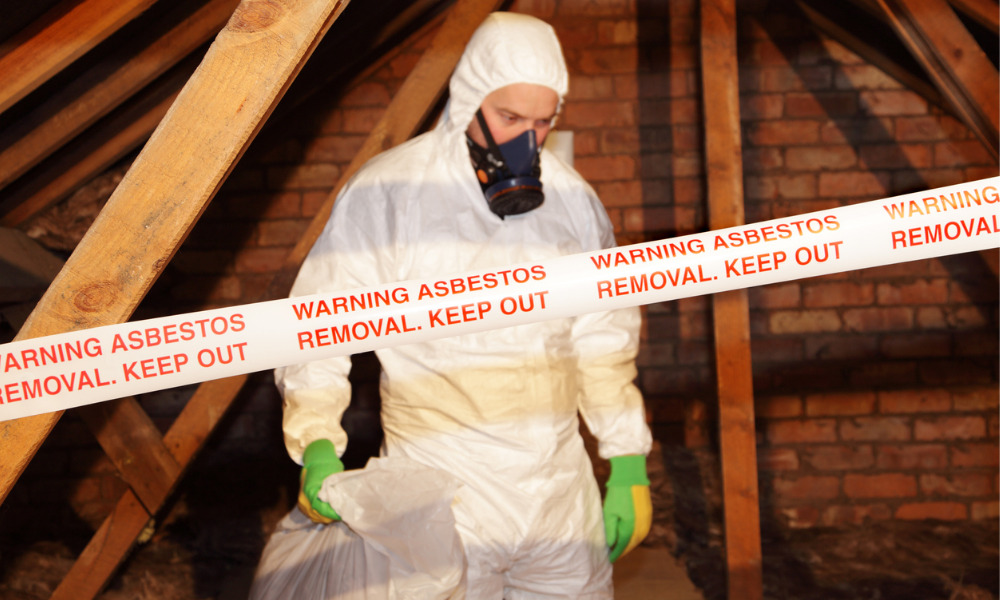Exposure to asbestos ‘continues to be the leading cause of fatalities for workers' in the province, says expert

New requirements regarding mandatory training and licensing for asbestos abatement work in British Columbia are now in effect.
The new rules – effective from Jan. 1 – require that asbestos-abatement employers be licensed, and ensure their workers are certified to perform this work.
B.C. is the first jurisdiction in Canada to enforce a formal licensing program related to asbestos. The provincial government first announced the rule change last year.
The decision to introduce this requirement stems from amendments made to the Workers Compensation Act in spring 2022. These amendments mandate that contractors engaged in asbestos abatement work must be licensed and can only employ trained and certified workers for this specialized field. The changes were implemented to guarantee the utmost safety for those involved in asbestos abatement operations.
WorkSafeBC has the authority to oversee the employer licensing program as well as worker certification. It started accepting licence applications in September 2023 and an online registry of licensed employers is now available. The required training for worker certification was launched in June 2023.
"Exposure to asbestos and the fatalities that result from those exposures continues to be the leading cause of fatalities for workers in British Columbia, accounting for about a third of all occupational deaths," Mary Lovelace, director of credentialling at WorkSafeBC, told CBC.
In 2022, asbestos exposure was a contributing factor in 61 of 181 workplace deaths.
And over the past decade, WorkSafeBC accepted more than 500 claims for workers who were killed by occupational disease related to asbestos exposure.
Also, a previous report from The Canadian Press noted that between 2002 and 2023, B.C. recorded nearly 1,200 work-related deaths linked to asbestos.
Keeping workers safe from asbestos
To keep safe workers working with asbestos, employers must provide them with proper respirators and protective clothing, according to the Canadian Centre for Occupational Health and Safety (CCOHS).
Respirators must be:
- Properly fitted to the worker.
- Used and maintained according to written procedures established by the employer and are consistent with the manufacturer's specifications.
- Cleaned, disinfected and inspected after use on a regular basis.
- Inspected and repaired before being used by a worker.
- Stored in a convenient, clean and sanitary location when not in use.
Meanwhile, protective clothing should:
- Be made of a material that does not readily retain nor permit penetration of asbestos fibres.
- Cover the head and body fully, fitting snugly at the ankles, wrists and neck in order to prevent asbestos fibres from reaching the garments and skin under the protective clothing.
- Include suitable footwear.
- Be repaired or replaced if torn.
Before working with asbestos-containing material (ACM), employers should:
- Identify and mark the boundary of the designated work area by barricades, fences, or similar means.
- Ensure that the immediate work area is cleared of objects, materials and equipment other than what is needed to do the work.
- Ensure that windows, doorways and all other openings are adequately sealed or secured to prevent the release of asbestos fibre into other work areas.
- Post signs at the boundaries of the designated work area indicating asbestos work is in progress, the hazards and the precautions required for entering the work area.
- Restrict entry into the designated work area to authorized persons who are adequately protected against the level of risk within the designated work area.
Read next: Choosing the best asbestos masks for your workers: a guide for businesses





